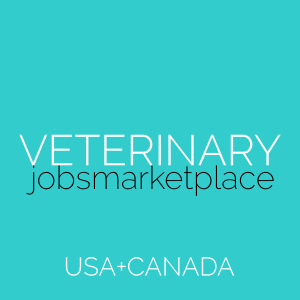
🔮 Navigating the Future: 2024 Veterinary Trends
The veterinary medicine landscape is ever-evolving, with new advancements and shifts in consumer behavior propelling the industry into new territories. As we stand on the cusp of 2024, it’s a pertinent time for veterinary practice owners and managers to cast a visionary eye toward the emerging trends that are set to shape the year ahead. Anticipating these trends isn’t merely about staying current; it’s about fostering a culture of foresight and adaptability that ensures your practice continues to deliver exceptional care while thriving in a competitive and dynamic environment.
Being prepared for potential changes is akin to setting a steady course through the waters of the unknown, with a compass of knowledge and a map of strategy. By understanding and embracing the trends on and over the horizon, you not only enhance the quality of care you provide but also fortify the resilience and sustainability of your practice. It’s about creating a harmonious blend of leadership, quality of care, and genuine work-life balance that resonates with your team, your clients, and your community…
Find your next job…the Fresh Way
Telemedicine and Digital Health
The integration of telemedicine within veterinary practice has been a transformative trend. It facilitates remote consultations, follow-up appointments, and initial assessments, providing convenience to pet owners and extending the reach of veterinary care to underserved areas. Telemedicine also minimizes the pressure on in-person appointment schedules, allowing for more flexible time management within the practice.
Telemedicine can significantly enhance client satisfaction and broaden the practice’s clientele base. It also allows veterinary professionals to manage their schedules more efficiently, potentially improving work-life balance.
Given the rapid advancements in digital technology and the changing behavior of consumers toward favoring convenience, the adoption of telemedicine is highly likely to continue its upward trajectory.
Practices not adopting telemedicine may find themselves at a competitive disadvantage, unable to meet the evolving expectations of convenience and accessibility from pet owners.
Embracing the Trend | By adopting telemedicine, practices can expand their client base, offer more flexible service hours, and enhance client satisfaction through convenient access to veterinary care. It also paves the way for a more balanced workload and improved work-life harmony for veterinary professionals.
Artificial Intelligence and Machine Learning (AI & ML)
The integration of AI and ML within veterinary practices holds the promise of significantly boosting diagnostic accuracy and operational efficiency. For instance, AI-driven image recognition can drastically enhance the accuracy and speed of diagnosing conditions from radiographs and other imaging studies. Meanwhile, ML algorithms can sift through vast amounts of data to predict disease outbreaks or optimize appointment schedules, thereby improving practice operations.
The adoption of AI and ML can lead to better patient outcomes through improved diagnostic accuracy and personalized treatment plans. Additionally, the operational efficiencies gained could free up time for veterinary professionals, potentially improving the work-life balance and reducing the overhead costs for the practice.
As the technological landscape continues to evolve rapidly and the benefits of AI and ML become more apparent, it’s highly likely that more veterinary practices will embrace these technologies.
Practices that lag in adopting AI and ML technologies may find themselves at a competitive disadvantage, struggling with inefficiencies and unable to offer the same level of diagnostic accuracy and personalized care as technologically advanced practices.
Embracing the Trend | Leveraging AI and ML can propel a practice into a new era of diagnostic excellence and operational efficiency. It can foster a culture of continuous learning and innovation, enhancing the practice’s reputation as a leader in modern veterinary care.
Sustainable Practices
Transitioning to sustainable practices encompasses a variety of actions, such as reducing waste, optimizing energy usage, and sourcing eco-friendly products. This not only aligns with the growing societal emphasis on sustainability but also can lead to cost savings in the long run.
Adopting sustainable practices can enhance the reputation of the practice among eco-conscious clients and staff, potentially leading to increased client loyalty and employee satisfaction.
As awareness and concern about environmental issues continue to grow, it’s highly likely that the trend toward sustainability in veterinary practices will continue to gain momentum.
Practices that do not adopt sustainable practices may find themselves out of step with evolving client and community expectations, potentially impacting client retention and staff morale.
Embracing the Trend | Engaging in sustainable practices can position a veterinary practice as a responsible and forward-thinking entity, attracting like-minded clients and staff, and contributing positively to the community and the environment.
Wellness and Preventive Care
Shifting focus towards wellness and preventive care involves a more proactive approach to animal health. It encourages early detection and management of potential health issues, promoting a culture of prevention over treatment.
This proactive approach can lead to improved patient outcomes, greater client satisfaction due to reduced emergency care costs, and a more educated client base that values preventive care, creating a positive ripple effect within the community.
With increasing awareness among pet owners about the benefits of preventive care and wellness, it’s highly likely that this trend will continue to grow.
Practices not adopting a wellness and preventive care approach may face challenges in client retention and satisfaction as the expectations of pet healthcare evolve.
Embracing the Trend | Transitioning to a wellness and preventive care model can foster stronger relationships with clients who appreciate a proactive approach to pet care. It can also lead to better patient outcomes, enhancing the practice’s reputation for quality care.
Data-Driven Decision Making
Leveraging data analytics tools can unveil a wealth of insights, from identifying operational bottlenecks to understanding client behaviors and preferences. It promotes a culture of evidence-based decision-making, allowing for more strategic resource allocation and targeted marketing efforts.
Data-driven decision-making can lead to improved operational efficiency, enhanced client satisfaction, and better patient outcomes, thereby potentially boosting the financial sustainability of the practice.
With the increasing availability and sophistication of data analytics tools, it’s highly probable that data-driven decision-making will become a norm in veterinary practice management.
Practices not embracing a data-driven approach may find themselves making less informed decisions, potentially impacting their operational efficiency and competitiveness in the market.
Embracing the Trend | Harnessing data analytics can provide a competitive edge through informed decision-making, targeted marketing, and enhanced client engagement. It lays the foundation for a culture of continuous improvement and strategic growth.
Personalized Medicine
Personalized medicine involves tailoring treatment plans to the individual characteristics of each patient, such as their genetic makeup, environmental factors, and lifestyle. It’s an approach that has been gaining traction in human medicine and is now transitioning to veterinary medicine, driven by advancements in genetic testing and data analytics.
This personalized approach can significantly enhance treatment efficacy and client satisfaction, as treatments are tailored to the unique needs of each patient, thereby potentially improving patient outcomes and adherence to treatment plans.
With advancements in genetic testing and a growing appreciation for the benefits of personalized medicine, it’s highly likely that this trend will continue to grow within the veterinary field.
Practices not adapting to personalized medicine may find their standard of care becoming outdated, potentially impacting client retention and satisfaction as the expectations for personalized care grow among pet owners.
Embracing the Trend | Venturing into personalized medicine can position a practice as a vanguard in providing highly tailored and effective care. It’s a pathway to enhanced client satisfaction and loyalty, as clients see the tangible benefits of personalized treatment plans for their pets.
In conclusion…
As we usher in 2024, the amalgamation of foresight, preparation, and adaptability will be your guiding light in navigating the promising yet uncertain terrain of veterinary medicine. By anticipating the trends outlined, your veterinary practice will be well-poised to continue being the epitome of quality care, community engagement, and enriching work environments. The journey of preparation begins now, which will propel you into a future filled with promise and excellence.
About Veterinary Jobs Marketplace…
We connect veterinary talent with the best veterinary jobs. Explore our Job Campaigns for GP Veterinarians, Emergency Vets, Veterinary Nurses, Technicians, and more, each enriched with video insights. Find new team members using our unique Reach, Frequency, and Story strategy, now including One-to-One Outreach.
For Job Seekers: Discover your ideal veterinary jobs in cities across the USA and Canada. Register for custom Job Alerts, bringing the latest opportunities directly to your Inbox.
For Employers: Register to reach skilled veterinary professionals for your practice. From GP Veterinarians to Emergency Vets, our Job Campaigns help you find the perfect team members.
Worldwide Audience: Expand your reach internationally to the UK, Europe, Australia, New Zealand, and Asia. Our global reach will connect you to our global veterinary community.

